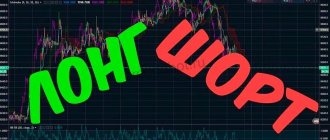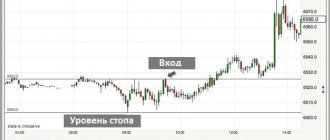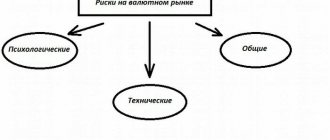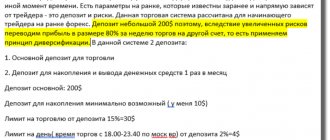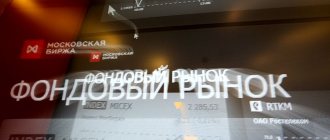MICEX sectors
In 2016, Transport and Electric Power were at the top of the trend. Well, if with transport everything is more or less clear and the main driver was Aeroflot, which absorbed Transaero, then with energy the story is at least strange. Tell me: how can a power plant suddenly start showing record profits? And not just one, but all at once! The demand for electricity is always quite stable, and we didn’t spend 2-3 times more electricity...
In fact, I am close to the idea that the company’s management was forced by ultimatum to start showing the companies’ real profits (instead of spending it on dubious projects), since their dividends go to replenish the federal budget. And the money in the budget is so needed now.
| MICEX sector | result |
| Transport | +117.31% |
| Electric power industry | +110.07% |
| Metals and Mining | +46.33% |
| Finance | +31.44% |
| Innovation | +25.56% |
| Oil and gas | +23.46% |
| Mechanical engineering | +12.58% |
| Chemistry and petrochemistry | +5.83% |
| Telecommunications | +4.32% |
| Consumer goods and trade | -0.33% |
Fund rating in 2021
The profitability of Russian funds for 2021 can be assessed using the following table. It presents the 10 best and 10 worst funds.
The most profitable fund was the FinEx MSCI China UCITS ETF, which invests in Chinese stocks. The leaders of the past year were mainly funds focused on the US high-tech sector and emerging markets.
Rating of mutual funds and ETFs by profitability in 2021
The full rating of investment funds can be downloaded from the link.
The table below compares the returns of some Russian funds with their foreign counterparts.
For example, the FinEx MSCI China UCITS ETF invests in the MSCI China Index. A foreign analogue can be the iShares MSCI China ETF. The difference in returns between funds in 2021 was 5.6%.
Another fund, Sberbank - Emerging Markets, invests in the Vanguard FTSE Emerging Markets ETF. The mutual fund's yield was 20.3%, and the ETF's yield was 27.1%. Over the year, the mutual fund “lost” 6.8%.
So far, Russian funds are inferior to their foreign counterparts in terms of profitability. The reason for this is higher fees and the fact that part of the fund is in cash rather than assets.
Russian stock market potential
Well, now the most interesting part. Prospects for world markets in terms of their value.
Every year, analysts from the German company Starcapital (starcapital.de) calculate an extremely interesting CAPE indicator.
Its purpose is to show how fairly a particular market is valued and what its potential is. What does this indicator mean? Russia is currently the cheapest undervalued market in the world with a CAPE of 5.9 and a P/E of 9.1! The closest countries are Poland, the Czech Republic, Türkiye and Brazil. The most expensive market is the USA.
This means that this year's good growth is just a drop in the bucket. More and more new records are ahead, and you and I still have time to take advantage of the opportunity and catch this wave.
Well, for my part, I can promise that in new posts I will tell you how this can be done with a minimum amount of effort, while still getting maximum results. The name of this method is Asset Allocation.
Don't forget to subscribe to blog updates on social networks, via email and push notifications. See you in new posts! Bye!
Investing just got better
The market has moderately positive expectations, although there are plenty of painful risks. The Moscow Exchange index grew by 8% during the crisis year of 2021, and by more than 11% since the beginning of this year, and banks offer deposits at 4% per annum. The ranks of retail investors are rapidly growing, and because of this boom, the Bank of Russia initiated a law to protect the rights of unqualified investors, which was adopted by the State Duma on Wednesday. The restrictions he introduces do not apply to shares from the quotation lists.
The top picks remain cyclical and commodity companies, which dominate the Russian market. “The rise in prices for raw materials and metals continues due to increased demand, and a trend reversal is not expected in the coming quarters,” says Yulia Melnikova, an analyst at Alfa Capital Management Company. “After all, it will take more time to fill the supply shortage on the market. In this regard, metallurgists can be singled out - MMK, Severstal and MMC Norilsk Nickel. NorNickel is a key beneficiary of rising palladium prices; MMK shares, in addition to rising steel prices, are attractive from the point of view of one of the highest dividend yields in the sector, Melnikova points out.
PSB analysts expect that record steel prices, caused by high Chinese demand, will allow steel companies to show phenomenal financial results, and investors in shares of NLMK, MMK and Severstal will receive double-digit dividend yields at the end of 2021. At the same time, they fear a cooling of both the Chinese economy and steel markets and recommend being more careful with investments in this sector towards the end of the year. Among the issuers with high dividend yield and potential for price growth, PSB analysts highlight Tatneft, ALROSA, Polyus, Sber, VTB, Magnit, Sovcomflot and Aeroflot (it benefits from progress in vaccination and the opening foreign air traffic).
As for risks, in recent years investors have always taken geopolitics into account; sanctions have provided a discount in the ruble and securities. More broadly, investors are increasingly paying attention to inflation risks, given the large-scale stimulus measures of the US Federal Reserve and the European Central Bank, says Vasily Karpunin, head of the information and analytical content department at BCS World of Investments. The Fed and the ECB are still firmly insisting that the rise in inflation is temporary. It provokes an increase in market rates, and if suddenly inflation risks begin to increasingly grip the minds of investors, then local waves of sales are possible, which could also affect the Russian stock market, warns Karpunin. High-tech securities trading at high multiples may suffer especially hard.
In April, citizens invested a record 77 billion rubles. in Russian shares, transactions on the Moscow Exchange were made by 1.9 million people - three times more than a year earlier
With a surge in inflation in leading countries, the growth of precious metals markets looks inevitable, and part of the portfolio should be kept in gold (through exchange-traded funds or shares of mining companies). Gold stopped near the levels of $1,870 per troy ounce, but recent sessions of the options market indicate an increase in price expectations to $2,500 in the coming year, Rosbank analysts note. “Accelerating inflation and increasing volatility in global stock markets have historically had a positive impact on investment demand for gold, so we expect the price to reach $2,200-$2,500 per ounce in the next 12 months,” says Dmitry, head of the metals and mining department at VTB Capital. Glushakov.
Return on assets table
I am updating the traditional annual table with the profitability of financial instruments.
Profitability rating for 2021:
- Government bonds +12.8%
- Corporate bonds +12.2%
- Euro +7.9%
- Bank deposit +7.8%
- Gold +6.2%
- Inflation +2.5%
- Shares (Moscow Exchange Total Return Index) -0.2%
- Real estate -2.5%
- Dollar -5%
Inflation-adjusted returns.
In this table, assets are ordered from top to bottom by their annual return.
Blue chips account for almost 60% of stock turnover
Since blue chips are the most liquid instrument, the volume of which is always sufficient for buying and selling, and the spreads are the smallest, it is not surprising that they are mainly traded.
According to some reports, blue chips make up to 60% of the turnover of the total number of shares. Moreover, foreign investors are actively investing in them. Lukoil and Tatneft are especially loved abroad for their good dividend history.
And here’s another interesting article: Which Russian companies consistently pay interim dividends
And people abroad love GDRs for Russian shares. Especially the GDR blue chips.
There are often many shares in one lot
Lot is the minimum amount of shares to purchase. On Western exchanges there are usually 100 shares in one lot. In addition, many brokers trade in fractional lots. On the Moscow Exchange, the norm is to have 10 shares in one lot. For example, Sberbank, Gazprom, Alrosa, MTS are traded in lots of 10 shares. At the same time, the trading mode for fractional lots is open only at certain periods of time, and there is almost never any liquidity there. So we can say that it will not be possible to buy fractional lots on the Moscow Exchange.
In addition, there are shares that, due to numerous splits, additional issues or a penny par value, are really worth a penny. As a result, 1,000 or even 10,000 shares are placed in one lot. For example, IDGC and VTB.
The simple rule that the Moscow Exchange follows is that the lower the share price, the more shares in the lot. Expensive shares such as Bashneft, Lukoil, Novatek, etc. are traded one share per lot.
In addition, one share per lot is on the St. Petersburg Exchange, so you can bypass the limit of 100 shares in 1 lot, which is typical, for example, for the New York Stock Exchange.
There is an official blue chip index
If we talk about indices, then we cannot but ignore the blue chip index. An interesting fact is that this index is unique - in general, the name “blue chips” denotes the most liquid and profitable shares of any market, but only the Moscow Exchange thought of making a separate index from them and also patenting its name as a separate trademark.
In general, in other countries “blue chips” are a figurative name for the most liquid and popular instruments, but in Russia this is their official status.
Currently, the index includes 15 issuers, their list is in the screenshot.
You cannot buy ETFs with them, but you can collect them in the same proportion in a brokerage account. Again, about 200-250 thousand rubles will be needed.
Bonds on the Moscow Exchange are an order of magnitude higher than shares
There are only 220 issuers of shares, and slightly less than 300 shares. While there are almost 700 corporate bonds, about a hundred OFZs, and about 200 municipal bonds. In total, there are more than 1000 options. Do you feel the difference? But there is also the over-the-counter market and Eurobonds.
In general, if you want to put together a portfolio that is truly diversified by industry, then Russian stocks alone are unlikely to be enough - to reduce risks you will have to include profitable corporate bonds. Well, or enter foreign markets.
I wrote detailed instructions on how to choose bonds.
Alternatives
Alternative options for investing money in Russian stock exchanges may now include such asset groups as:
- stocks and bonds of Southeast Asian countries. More growth prospects in dynamically developing economies;
- market of gold, silver and precious metals;
- antiques market, copyrights, technology, as well as art, wine collections;
- cryptocurrencies (first TOP 10 rating);
- assets denominated in dollars. The best way is in US dollars.
Dividends influence quotes more than fundamentals
Many investors, frankly speaking, come to the Russian stock market for dividends. Therefore, news of high dividends causes a lot of excitement and the stock skyrockets.
At the same time, not all investors analyze the statements and do not understand where such high dividends come from. And then they wonder why after the gap the price goes down and doesn’t want to come back.
For example, the Central Telegraph this year received additional profit from the sale of its buildings. But this was a one-time income. Moreover, the stock's fundamentals have deteriorated as the company has fewer assets.
The graph shows how the stock price rose after the announcement of dividends and how quickly it fell after they were paid.
Market price of the company
The market price of a company should objectively exceed its capitalization by approximately the amount of economically justified borrowed capital used by it. Because the market value of the shares compensates only for the available equity capital of the company, but not for that which was borrowed through a sum or a bank loan.
The process of buying a company is a process of repurchasing its capital, both its own in the form of shares and borrowed capital, primarily in the form of bonds available for this purpose. This is the underlying reason why, when purchasing a certain joint stock company as a whole, the everyday monetary value of its shares increases in comparison with its market level that existed before the moment when the impending resale process became known.
The Moscow Exchange has different trading modes for stocks and bonds
Shares are traded in T+2 mode, i.e. settlement is made on the second day after purchasing the asset. This is done for the convenience of speculators - this practice is generally widespread throughout the world. For a long-term investor, there is no particular difference in the trading mode T+2, T+1 or T0. You just need to take into account that when buying a share for dividends, the purchase must be made at least 2 business days before the register is closed, since in fact you will become the owner of the share on the second day.
For example, if the register closes on July 15, then the share must be purchased before July 13. If you make a purchase on July 14, you will not receive dividends, since you will become the owner of the stock only on July 16.
Corporate and municipal bonds, as well as Eurobonds, are traded in T0 mode, i.e. The asset is delivered on the day of purchase. At the same time, some corporate bonds are traded in T+1 mode. OFZ are traded in T+1 mode.
Structure and participants
The stock market implies the presence of a certain structure, which is primarily formed by such institutions as:
- The Central Bank of the Russian Federation, which determines the policy of the stock market (as part of the overall state financial system), the circulation of securities on it, the rights and obligations of all its participants. In some cases, the Central Bank of the Russian Federation is a direct participant in trading on the exchange. For example, he often carries out currency interventions to smooth the exchange rate of the national currency - the ruble - or, on the contrary, enters the stock market with purchases of dollars to replenish the country's gold and foreign exchange reserves.
- Stock exchange as a venue for trading securities and other exchange-traded assets.
- Intermediaries in the form of brokerage companies, currency dealing centers, forex brokers, investment banks, as well as management companies of mutual funds and ETFs.
- Bidding participants are investors (both private and corporate), including non-state pension funds, banks, and insurance companies.
- Tax authorities that keep records of financial transactions in trading on the stock market, over-the-counter transactions with securities and assets, accrue and collect taxes.


